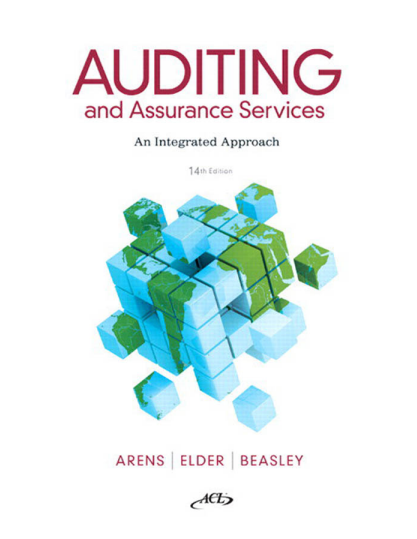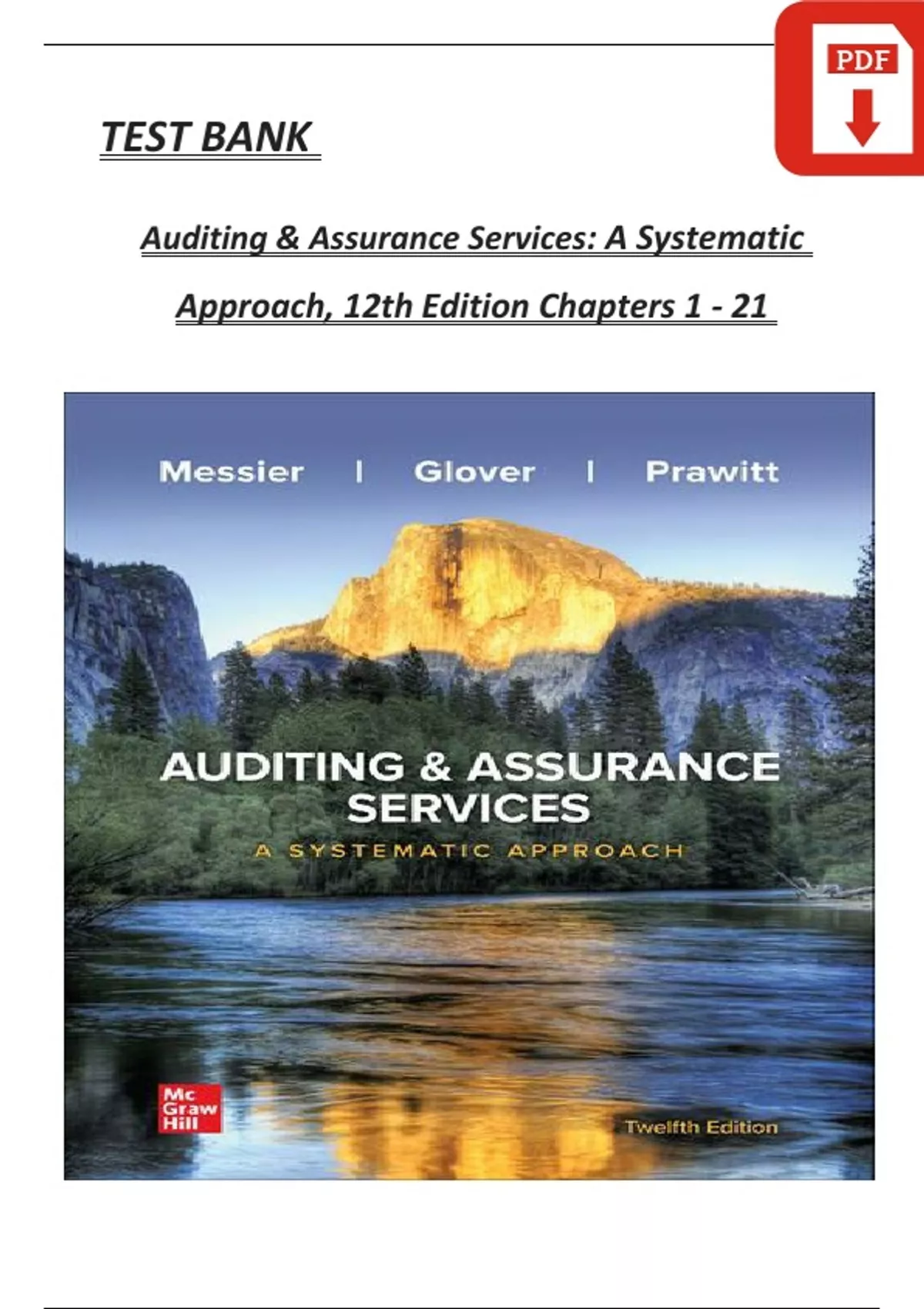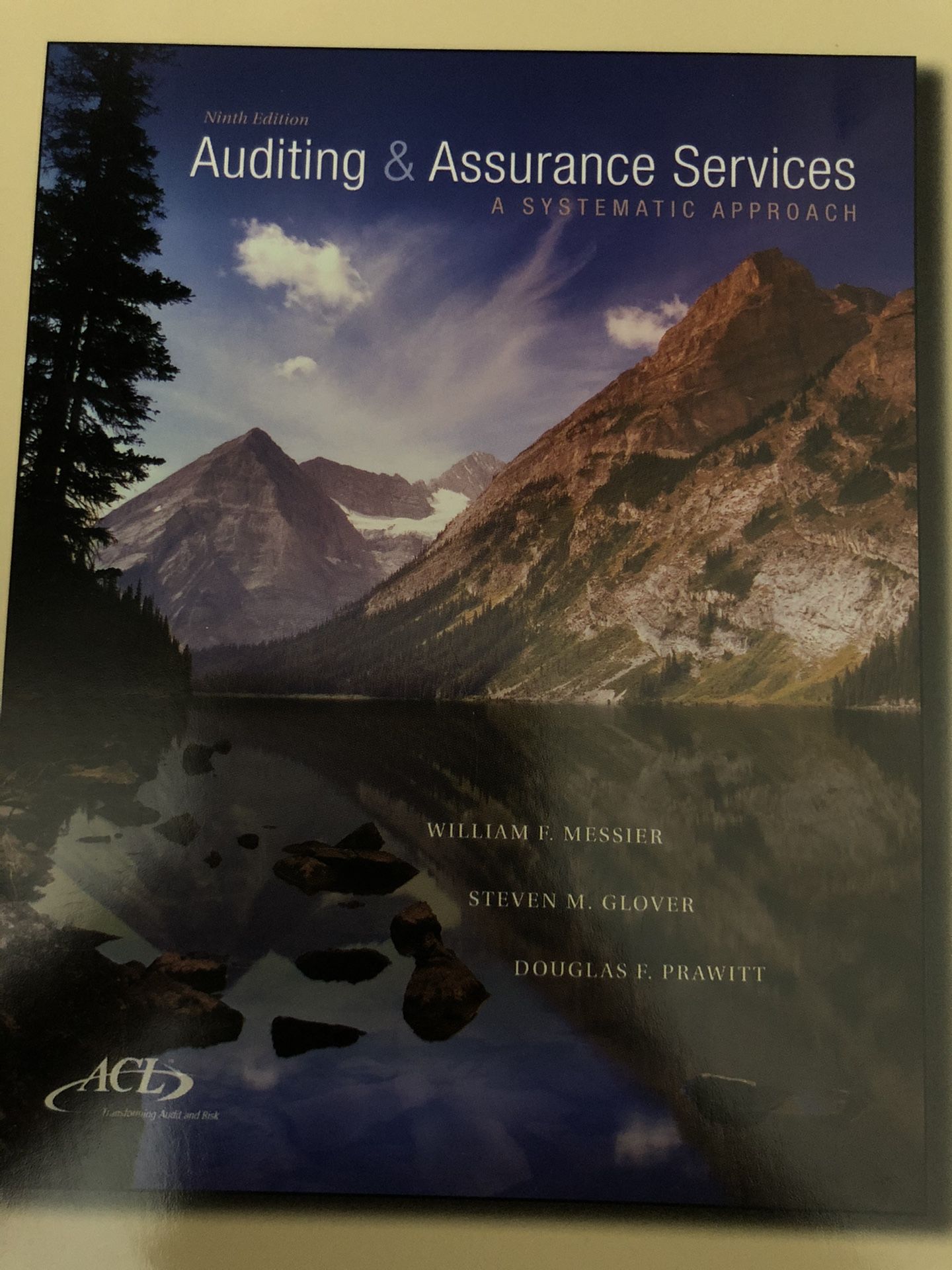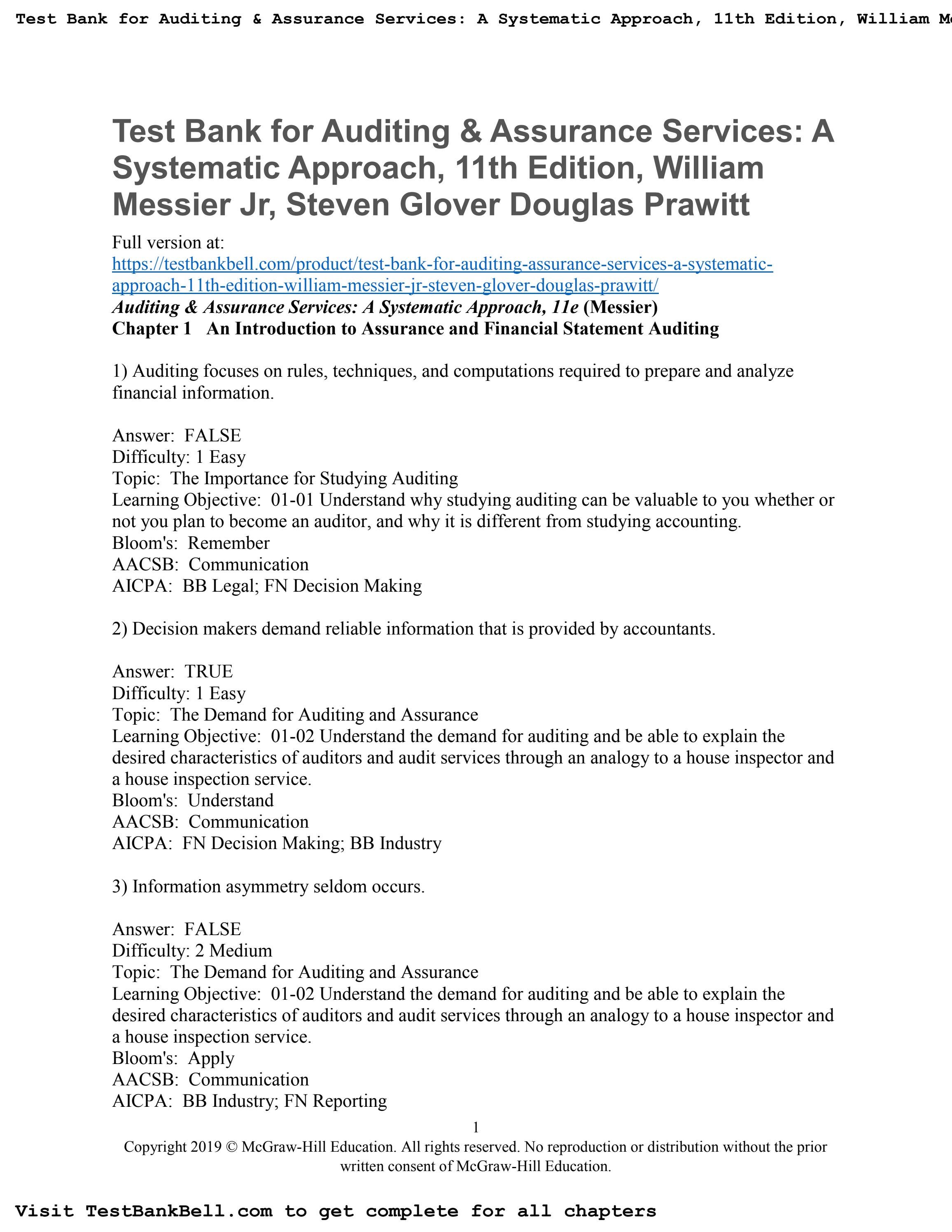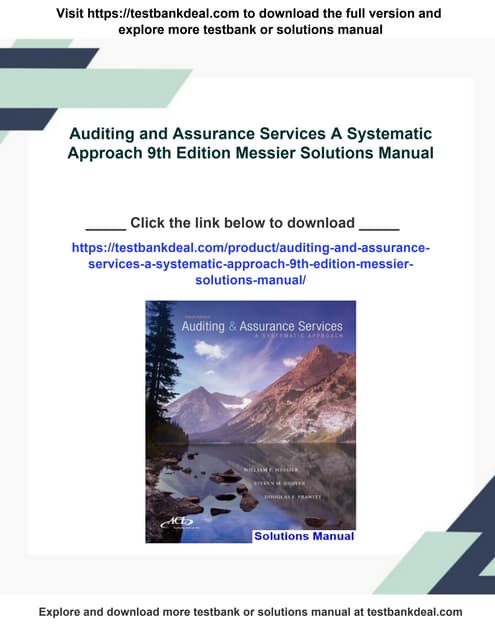Auditing & Assurance Services: A Systematic Approach Pdf

Imagine a world where financial reports are shrouded in mystery, where investors tread cautiously, unsure if the numbers they see reflect reality. A world where businesses operate in the dark, uncertain if their internal controls are robust enough to safeguard their assets. Thankfully, this isn't our world. The backbone of trust in financial reporting, and indeed in the integrity of organizations, lies in the rigorous and systematic processes of auditing and assurance.
At the heart of effective auditing and assurance lies a systematic approach, a methodology that transforms what could be a chaotic process into a well-defined, reliable, and trustworthy assessment. This approach is often embodied in comprehensive resources like the "Auditing & Assurance Services: A Systematic Approach" PDF, a guide that empowers professionals to conduct thorough and insightful audits.
Auditing and assurance services provide independent verification and validation of information. This is crucial for stakeholders to make informed decisions based on reliable data. The systematic approach, as detailed in such resources, is not just a collection of procedures; it's a philosophy of rigorous analysis and critical thinking.
The Evolution of Auditing and Assurance
The need for auditing emerged from the increasing complexity of business transactions and the separation of ownership from management. Early audits primarily focused on detecting fraud and errors in financial records. As businesses grew larger and more intricate, so did the demands on auditing and assurance services.
The profession evolved from basic verification to providing reasonable assurance about the fair presentation of financial statements. The development of standardized auditing procedures and frameworks like Generally Accepted Auditing Standards (GAAS) marked a significant step in ensuring consistency and quality across audits.
The shift from simply detecting errors to providing proactive insights has been driven by technological advancements and changing business needs. Modern auditing and assurance increasingly incorporate data analytics, risk management, and a focus on governance and internal controls.
The Core Principles of a Systematic Approach
The "Auditing & Assurance Services: A Systematic Approach" PDF emphasizes the critical elements that define a well-executed audit. These include planning, risk assessment, evidence gathering, and reporting. Each stage is meticulously structured to ensure a comprehensive and reliable audit outcome.
Planning is the cornerstone. It involves understanding the client's business, industry, and regulatory environment. It also identifies potential risks that could impact the financial statements or operational effectiveness.
Risk assessment is the ongoing process of identifying and evaluating the risks of material misstatement. This involves assessing both inherent risks (those arising from the nature of the business) and control risks (those arising from the ineffectiveness of internal controls).
Evidence gathering is the process of collecting sufficient appropriate evidence to support the auditor's opinion. This can involve examining documents, observing processes, interviewing personnel, and performing analytical procedures.
Reporting is the culmination of the audit process, where the auditor communicates their findings and opinion on the financial statements or other subject matter. The report must be clear, concise, and accurately reflect the scope and results of the audit.
The Significance of the "Auditing & Assurance Services: A Systematic Approach" PDF
The "Auditing & Assurance Services: A Systematic Approach" PDF serves as an invaluable resource for both aspiring and experienced auditors. It provides a structured framework for conducting audits and assurance engagements in a consistent and reliable manner.
For students and junior auditors, the PDF offers a comprehensive introduction to the principles and practices of auditing. It provides clear explanations of complex concepts and practical examples to illustrate key points.
Experienced auditors can use the PDF as a reference guide to stay up-to-date on the latest developments in auditing standards and best practices. It serves as a reminder of the critical elements that must be considered in every audit engagement.
The Impact on Businesses and Stakeholders
The systematic approach to auditing and assurance services has a profound impact on businesses and their stakeholders. It fosters trust and confidence in financial reporting, enabling investors to make informed decisions. It also promotes sound corporate governance and risk management practices.
For businesses, a well-conducted audit can identify areas for improvement in internal controls and operational efficiency. It can also help to deter fraud and ensure compliance with laws and regulations.
For investors and creditors, audits provide assurance that the financial statements are fairly presented and reliable. This allows them to make informed investment and lending decisions.
According to a report by the Securities and Exchange Commission (SEC), reliable financial reporting is essential for maintaining the integrity of the capital markets. Audits play a critical role in ensuring that financial information is accurate and transparent.
Challenges and Future Trends
Despite the benefits of a systematic approach, auditing and assurance services face several challenges. These include the increasing complexity of business operations, the rapid pace of technological change, and the growing threat of cybercrime. These require a continuous evolution of methodology.
One of the key trends is the increasing use of data analytics in auditing. Data analytics can help auditors to identify patterns and anomalies in large datasets, enabling them to focus their efforts on areas of highest risk.
Another trend is the growing emphasis on continuous auditing, which involves monitoring financial transactions and controls on a real-time basis. Continuous auditing can help to detect errors and fraud more quickly and effectively.
The evolution of technology is also impacting the skills required of auditors. Auditors need to be proficient in data analytics, cybersecurity, and other emerging technologies.
Looking Ahead
The systematic approach to auditing and assurance, as exemplified in resources like the "Auditing & Assurance Services: A Systematic Approach" PDF, is crucial for maintaining trust and integrity in the global economy. As businesses continue to evolve, so too must the auditing profession.
By embracing technological advancements, fostering a culture of continuous improvement, and maintaining a commitment to ethical conduct, auditors can continue to play a vital role in promoting transparency and accountability.
The future of auditing and assurance lies in its ability to adapt to the changing needs of businesses and stakeholders. By embracing innovation and upholding the highest standards of professionalism, the auditing profession can continue to provide valuable assurance and insights that contribute to a more sustainable and prosperous future.





